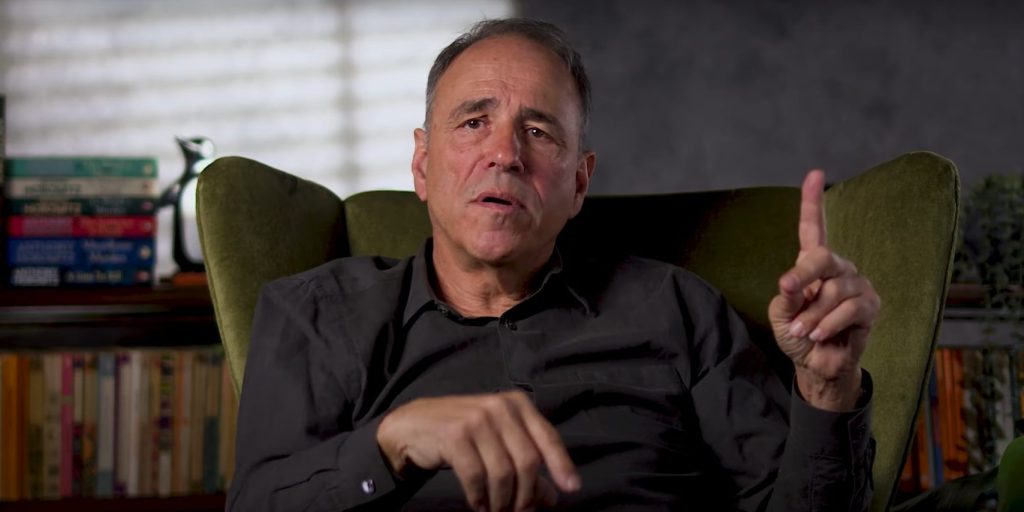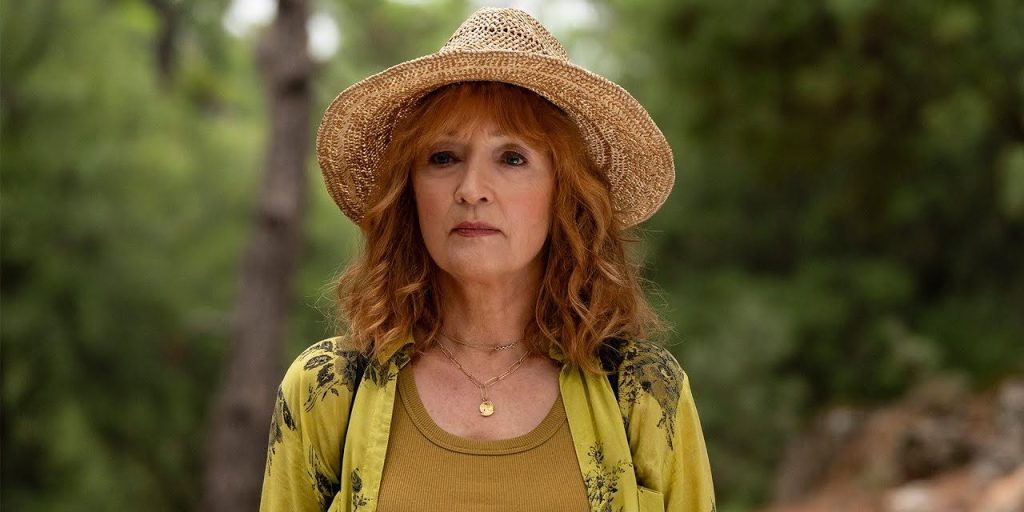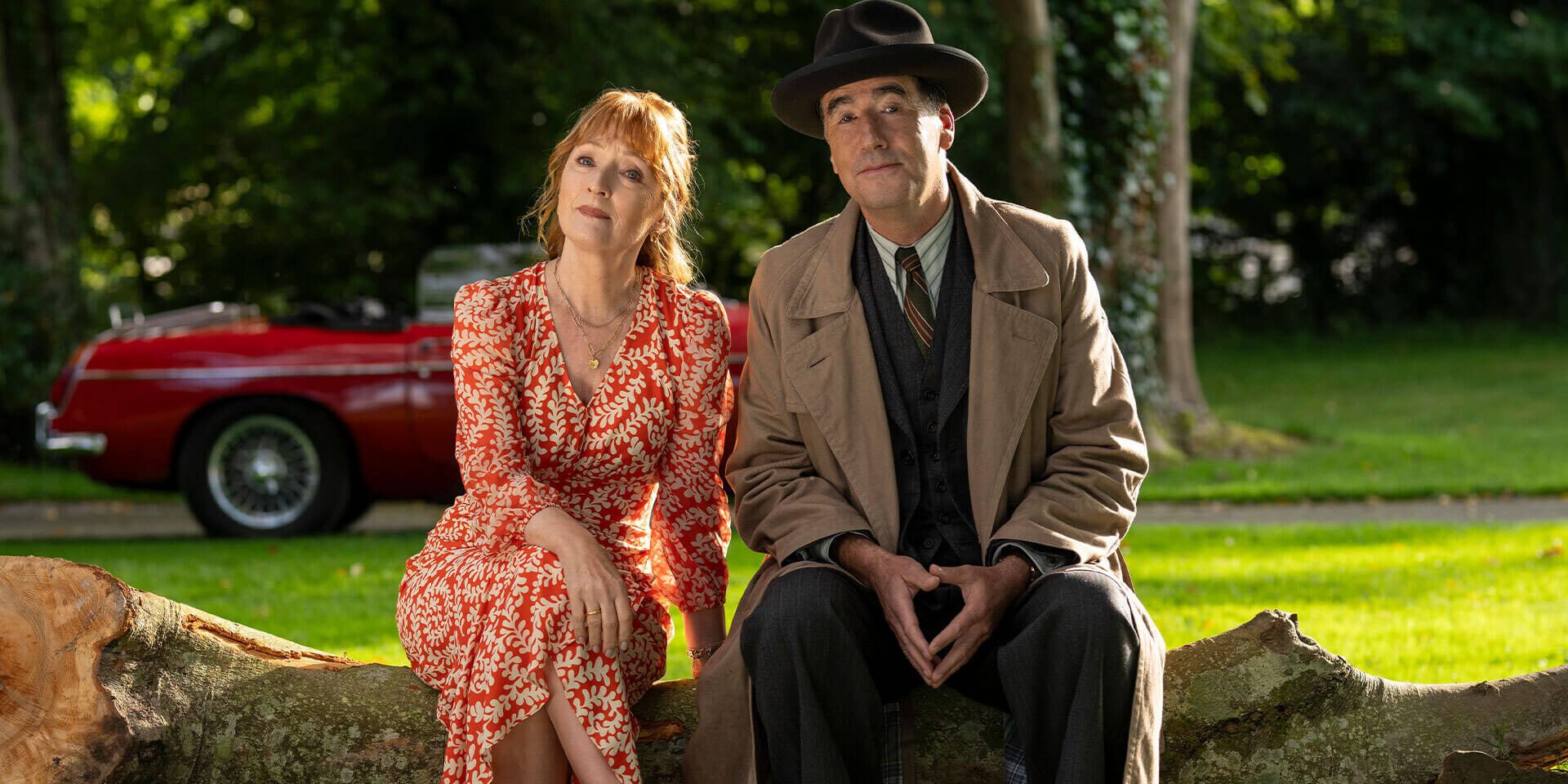‘Moonflower Murders’ is a British murder mystery show that follows Susan Ryeland, an editor turned amateur sleuth who is living in Crete with her boyfriend, Andreas. When a cold case resurfaces in Susan’s life, her vacation is disrupted as she begins probing into a murder committed at a British country hotel eight years ago. To make matters complicated, the protagonist learns that Alan Conway had visited the hotel and written a novel about the events. Subsequently, a young woman disappears after reading the book and believing the wrong person has been arrested in relation to the crime.
The Anthony Horowitz creation pits Susan in a layered mystery narrative where the secrets of cracking the case lie within an Atticus Pünd novel, the fictional detective protagonist of Conway’s works. The story presents an enigmatic puzzle where two simultaneous stories run concurrently – one fictional and one real. However, the further Susan progresses in her investigation, the more things begin to line up, and the more connections start appearing. Given the complexity of the whodunit mystery, questions may be raised regarding its inspirations and whether it happens to be based on a true story.
Moonflower Murders is Based on a Mystery Novel With an Embedded Story Format
‘Moonflower Murders’ is an adaptation of Anthony Horowitz’s 2020 eponymous novel, which is also the second novel of his ‘Susan Ryeland’ series. The first book was adapted into the 2022 show ‘Magpie Murders,’ with several key cast members and characters returning for the sequel, which itself was penned by Horowitz. Originally, the author had no plans for writing a second novel, citing that it was an incredibly complicated and time-consuming affair to come up with the first one. However, after discussions with his wife, Jill Green, who also serves as an executive producer on the series, the writer decided to pen a second novel as making a show would be difficult without having a follow-up narrative to the original story.

As such, the novelist looked to capture some of the key elements and trickery from the first murder mystery novel and carry it over to the next. At the same time, he also wished to distinguish enough that new strands could be found in a well-worn formula. “My aim was to try and do the same sort of trickery,” Horowitz said in an interview with PBS Books. “The book within a book. Atticus Pünd, this detective from a fictional world interacting with Susan Ryeland. And number two of them having this strange cross-dimensional relationship and a very complicated, although easy to follow, mystery. But my first aim was to make it as different as I possibly could. So it helped that at the start of the book, Leslie Manville, playing Susan Ryland, wasn’t even in the United Kingdom; she was abroad in Crete.”
The Nuances of Adapting the Novel Into a TV Show
While structuring the overarching mystery and its intricate plotting, Anthony Horowitz revealed that his writing process often involves coming up with clever motivations for the crime itself. The novelist looks to laser down the focus of the main thread to a single event or motive around which everything else can be built, like the red dot in the middle of a dartboard. To make sure everything was concretely understandable, the author spent a lot of time planning out the overall narrative at an intricate level before sitting down to write. He explained his thought process by saying, “My job is to create something which is for my money and my mind, suitably complicated, but which won’t leave an audience struggling to follow.”

“It’s got to be very clear, and that involves a lot of time thinking about structure, about who was where, when, how do people relate to each other, how can I surprise people and throw them off the scent,” he said. Those elements of structure are pivotal to the complex interplay between the real and fictional worlds of ‘Moonflower Murders.’ However, when translating the source material, the writer revealed that certain liberties and alterations were unavoidable due to the nature of the TV show medium. The process was all about simplification and ensuring everything fit together despite the small changes, like a scene being played differently or a character not being present at times.
The writer explained, “You have to accept that the television show has got to be different from the book. You’re not going to be able to take the 600 pages and nail each and every one of them to the screen. So, some characters are going to leave the scene, some are going to leave the show, and some are not going to be in it. Some incidents are going to be taken out; everything is going to have to be simplified to a certain extent because you just don’t have the time or the space or the concentration, really.”
On the flip side, the interactions between characters took on a life of their own as various cast members established a unique chemistry between each other. Therefore, the drama element of the story was expanded through a greater focus on character and performance instead. Additionally, deeper social themes like discrimination rear their heads as the narrative progresses, which serve as touchstones of unfortunate real-world dynamics in an otherwise entertaining whodunit scenario.
Read More: Best Detective Shows on HBO Max


You must be logged in to post a comment.